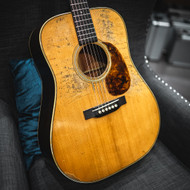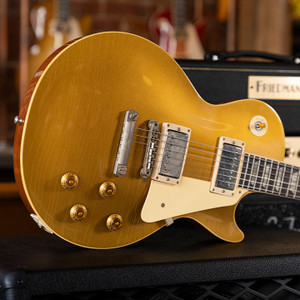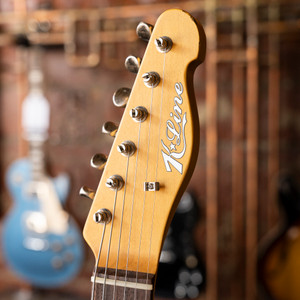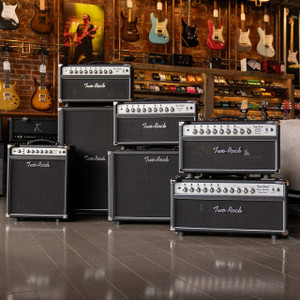The Allure of Pre-War Tone: A Journey from PA to NC
Jul 17th 2019
The Allure of Pre-War Tone: A Journey from Nazareth, PA to Hillsborough NC
Time and time again, it has become clear that in addition to natural sonic symmetry, sustain, volume, etc., players gravitate towards guitars that somehow embody their favorite recordings. After all, for most of us here in the 21st century, it was a CD, Tape, or Vinyl that spurred our love of music in the first place. One advantage to this method of introduction is that we were able to play songs over and over again. Inevitably, the particular tone and timbre of the guitar tracks worked their way into our subconscious, and came to frame our notion of how the instrument should sound.
The information revolution that coincided with the advent of the internet has rendered modern acoustic guitarists more knowledgeable than ever before. Not only do we have wide access to online encyclopedias and historical records, but virtually any piece of music can be played instantly. Consequently, details that used to be taken for granted (species of Spruce, for example), have risen in our awareness. In an effort to re-create the ideal semblance to iconic guitars, contemporary builders have scoured, scanned, and pondered these anointed instruments in an effort to glean their most significant positive vintage characteristics. Once the crucial lessons have been learned, fine luthiers then tend to imbue their creations with structural innovations that ensure current expectations of reliability are met. Here at Midwood, we are proud to host many of these fine luthiers and their unique interpretations of the ideal blend of old and new.
When discussing traditional American guitar luthiery, it makes sense to begin with C.F. Martin. Almost 200 years ago (est. 1833), the Martin family began elevating the acoustic guitar from its early parlor proportions to its modern form. The so-called “golden-era” occurred in the 1930s, ending with the US entrance into WWII. These “pre-war” Martins are the basic blueprint for perfect, vintage tone. That said, the blueprint shifted slightly from year to year, and most guitar historians would agree that it was primarily the amount of talent and fine materials concentrated within Nazareth, PA during this time period that made Martin’s instruments so great.
The combination of Adirondack Spruce and Brazilian Rosewood is often credited with being the most defining feature of a Pre-War Martin. This, of course, only applies to the 28 and 45 series models (18s had Mahogany back and sides), but being the top of the line, these were preferred by some of the top-selling recording artists in the history of American music. For example, Jimmie Rodgers, Hank Williams, and Neil Young all played 45 series Martins. For anyone who loves American music, those names carry as much weight as the Martin name itself, and the sound of their instruments has borne a huge influence on the way we all think guitars should sound.
There are also certain design characteristics that have been emphasized and adopted by modern builders in the re-creation of these masterpieces. Scalloped, forward-shifted top bracing (later shifted slightly to the rear due to increased player preference for heavy strings) gets mentioned quite a bit. It’s worth noting, however, that the braces were hand-carved and uniquely catered to the tonewoods. This is, indeed, where a luthier’s voicing skills are most clearly demonstrated. Additionally, hot hide glue and varnish are regarded as painstakingly period-correct details that allow for better vibration.
Design and materials aside, the widespread consensus is that guitars mature and improve sonically with age. That might seem like a hard thing for modern builders to work around, but amazingly, they have. The Vintage Tone System employees a process called torrefaction to catalyze the natural “drying out” process that occurs to wood over time. The result is remarkable. Every other minute detail of the original 1931 model that served as this guitar’s inspiration has been replicated, as well.
Here in North Carolina, our friends at Pre-War guitars have taken things one step further still. According to them (though the concept is undeniable), part of the reason why the Pre-War Martins, and old Martins in general, sound so good, is because they have been played and their finish has worn down. With less restriction, the guitar is allowed greater freedom of movement. Think of a pair of jeans that has been perfectly broken in.
No matter what you gravitate towards in this wide world of guitars, it most likely all started with certain recording, a certain guitar, a certain tone. Here at Midwood, we pride ourselves in having extensive knowledge of the history of guitar music, and that is reflected in the instruments we stock. Give us a call and let us help find the specific vintage profile that’s right for you, spec by spec, year by year. We may never be able to sound exactly like our musical heroes, but through insight, science, innovation, and imagination, we can clone their tone.






